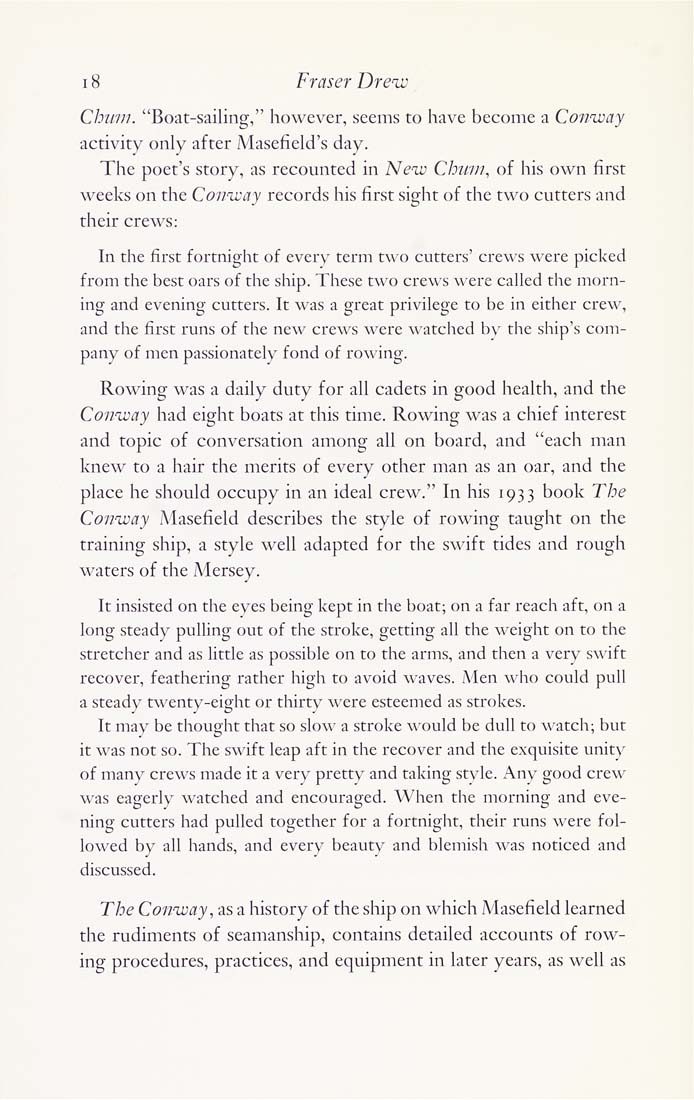Columbia Library columns (v.26(1976Nov-1977May))
(New York : Friends of the Columbia Libraries. )
|
||
|
|
|
|
| v.26,no.1(1976:Nov): Page 18 |

18 Fraser Drew China. "Boat-sailing," however, seems to have become a Conway activity only after Masefield's day. The poet's story, as recounted in New Chmii, of his own first weeks on the Conway records his first sight of the two cutters and their crews: In the first fortnight of cvcr\- term two cutters' crews were picked from the best oars of the ship. These two crews were called the morn¬ ing and evening cutters. It was a great privilege to be in either crew, and the first runs of the new crews were watched bv the ship's con"i- pany of men passionately fond of rowing. Rowing was a daily duty for all cadets in good health, and the Conway had eight boats at this time. Rowing was a chief interest and topic of conversation among all on board, and "each man knew to a hair the merits of every other man as an oar, and the place he should occupy in an ideal crew." In his 1933 book The Conway Masefield describes the style of rowing taught on the training ship, a style well adapted for the swift tides and rough waters of the Mersey. It insisted on the eyes being kept in the t)oat; on a far reach aft, on a long steady pulling out of the stroke, getting all the weight on to the stretcher and as little as possible on to the arms, and then a very swift recover, feathering rather high to avoid waves. .Men who could pull a steady twenty-eight or thirty were esteemed as strokes. It may be thought that so slow a stroke would be dull to watch; but it was not so. The .swift leap aft in the recover and the exquisite unit\' of many crews made it a very pretty and taking style. Any good crew was eagerly watched and encouraged. When the morning and eve¬ ning cutters had pulled together for a fortnight, their runs were fol¬ lowed by all hands, and every beauty and blemish was noticed and discussed. The Conway, as a history of the ship on which Masefield learned the rudiments of seamanship, contains detailed accounts of row¬ ing procedures, practices, and equipmenr in later years, as well as |
| v.26,no.1(1976:Nov): Page 18 |







